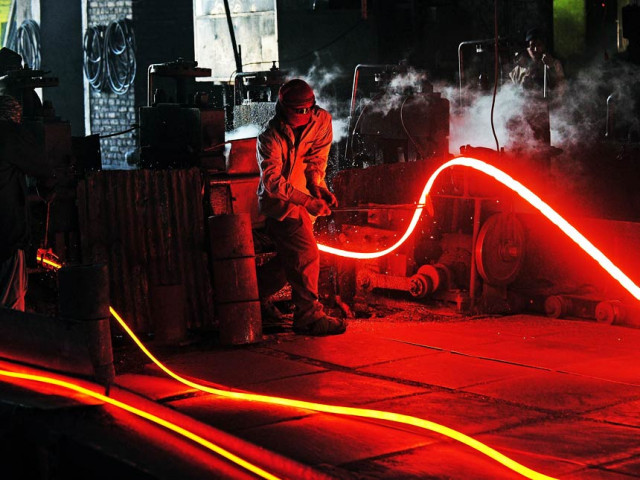View from McLeod Road: Why the market is excited about the Mughal Steel IPO
New listings are few and far between, and this one is an established name in a growing industry

The Mughal Iron and Steel IPO was oversubscribed by nearly 3.3 times what the company expected to raise in the institutional phase of the offering. PHOTO: AFP
It does not take much to get investors in Pakistani equities excited, and a reasonably large initial public offering of a company with a successful track record in a growing industry always causes a bit of a stir. So perhaps, it is not surprising that the Mughal Iron and Steel IPO was oversubscribed by nearly 3.3 times what the company expected to raise in the institutional phase of the offering.
In the institutional phase of the bidding on Monday, investors put in bids worth Rs2.3 billion for the IPO at the high end of the pricing range at Rs34 per share, in a matter of minutes.
The company was only offering 20.5 million shares, which at that price would be worth Rs697 million, valuing the overall company at Rs3.7 billion or 9 times the Rs413 million in net income over the past 12 months ending September 30, 2014, the latest period for which financials have been released.
There are two major reasons that make the Mughal Steel IPO attractive. The first is the fact that the proceeds from the 25% of the company that is being publicly listed will not be going to its existing shareholders but rather being pumped into the company to expand its production capacity. The company will use Rs400 million out of the IPO proceeds to install an induction furnace with a capacity of 90,000 tons per year, and enhance its BMR re-rolling mill capacity by 30%.
The remainder of the IPO proceeds – approximately Rs530 million – will go towards financing working capital, which in practice is likely to mean the company paying down some of the Rs3.3 billion in short-term borrowings it currently has.
The second reason why the market is – or at least should be – excited about the issue is the fact that this is a company that has been able to steadily grow its market share and, unlike most of its competitors in the steel industry, has exposure not just to industrial users of steel, but also supplies steel directly to consumers looking for steel girders for home construction.

Global investors love anything that has direct exposure to consumer spending in emerging markets, and Mughal Steel is likely to be the only company in the steel space that will offer them that exposure.
The fact that the issue offers them exposure to a company that has grown its revenues by 23.8% per year for the past four years and its profits by 103% per year during that same period is likely to be highly attractive as well.
At the IPO price of Rs34 per share, and assuming post-IPO financials, the company is being valued at a price to earnings ratio of 9 times latest 12 months’ (LTM) earnings and an enterprise value that is 11.5 times LTM earnings before interest, taxes, depreciation and amortisation (EBITDA).
Its two closest competitors currently trade at an average of 17.5 times LTM earnings, making Mughal Steel highly undervalued.
If the stock price were to go up to its competitors’ levels, that would imply a valuation of Rs66 per share, an upside of nearly 95% from its current levels. That level is likely to be reached during the second phase of the IPO, when the company is offered to ordinary investors.
Yet the company is not without its risks, the principal of which is its high levels of debt. The company is highly leveraged, with Rs5.9 billion in total debts, amounting to 7.7 times its LTM EBITDA. Even after issue, the company’s debt-to-EBITDA ratio will be 7, high by global industry standards.
In other words, despite being in a staid industry like steel production, Mughal Iron and Steel may offer investors a high-risk-, high-reward investment prospect.
the writer is an editorial consultant
Published in The Express Tribune, March 9th, 2015.
Like Business on Facebook, follow @TribuneBiz on Twitter to stay informed and join in the conversation.



















COMMENTS
Comments are moderated and generally will be posted if they are on-topic and not abusive.
For more information, please see our Comments FAQ